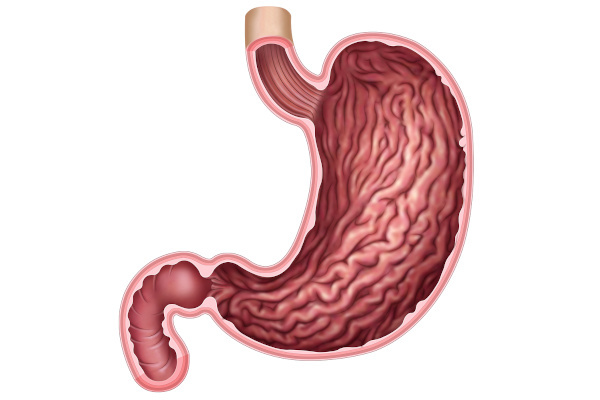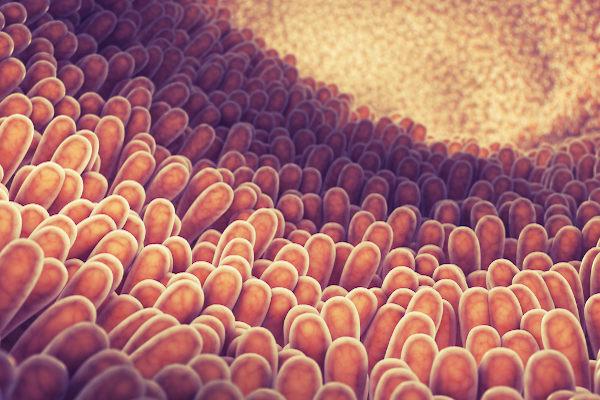O digestive system it is the human body system responsible for ensuring the processing of the food we eat, promoting the absorption of the nutrients contained therein and the elimination of material that will not be used by the body. This processing is guaranteed thanks to the action of the various organs that make up the food channel, as well as the presence of glands accessories, which synthesize substances that are essential in the digestion process.
The organs that make up the digestive system are the mouth, pharynx, esophagus, stomach, small intestine, the large intestine and the anus. The accessory glands of this system are the salivary glands, the pancreas and the liver.
Read too:Human body - body parts and their functions
Organs of the digestive system
The organs of the digestive system are responsible for ensuring food intake, digestion, absorption of nutrients and elimination of what is not needed by the body. Next, we will learn more about each component of the digestive system, as well as its role in the digestion process.

→ Mouth
The mouth is where digestion begins. Our teeth promote mechanical digestion, ensuring that food is shredded, crushed and crushed. In addition to the action of the teeth, the food in the mouth undergoes the action of Spittle, which is secreted by the salivary glands. Saliva contains the enzyme amylase, also known as ptyalin, which promotes the initiation of carbohydrate digestion.
The tongue is also important at this stage, ensuring that the food mixes with the saliva and forms the so-called food cake. It is the tongue that also helps in swallowing the bolus, pushing it towards the pharynx.
Read too: Teeth, structures that participate in mechanical digestion in the mouth.
→ Pharynx
This organ is common to the digestive and respiratory system, opening towards the trachea and esophagus. The bolus travels from the pharynx to the esophagus.
→ Esophagus
It is the tubular, muscular organ that connects the pharynx with the stomach. The bolus reaches the stomach thanks to smooth muscle contractions that form the esophagus. These contractions are called peristaltic contractions.
→ Stomach

The stomach is the dilated organ of the digestive system and is located just below the diaphragm. In this organ, the food bolus undergoes the action of the digestive juice, called gastric juice, which is mixed with it thanks to the muscular activity of the organ. At this point, the food cake is now called chyme.
Gastric juice has among its components the pepsin, which acts in the digestion of proteins, and the hydrochloric acid, which makes the stomach pH low and promotes pepsin activation. Generally, hydrochloric acid and pepsin do not irritate the stomach wall, as it has mucus that coats it. In addition, there is a constant renewal of the cells that line the inside of the stomach.
Read too: Why does the stomach make noise?
→ Small intestine
It is the longest portion of the digestive system, being about 6 m long. It has three segments: the duodenum, the jejunum and the ileum. In this portion of the digestive system, digestion is completed and nutrients are absorbed. The organ is responsible for most of the digestion process.
In the first portion, called the duodenum, the chyme, coming from the stomach, undergoes the action of pancreatic secretions (pancreatic juice), bile and secretions produced by the small intestine itself (enteric or intestinal juice). THE pancreatic secretion, rich in bicarbonate, helps to neutralize the acidity of the chyme. In addition, it has several enzymes, such as trypsin and chymotrypsin, which act on proteins.
THE bile, produced by the liver and stored in the gallbladder, acts as an emulsifier, facilitating the digestion of lipids. The secretion produced by the small intestine is rich in enzymes, such as aminopeptidase (acts on amino acids), nucleosidases and phosphatases (acts on nucleotides).
The jejunum and ileum, the following portions of the small intestine, act mainly on nutrient absorption, thanks to the presence of villi and microvilli. The villi are folds in the lining of the intestine, while the microvilli are projections on the epithelial cells of the villi.

→ Large intestine
With about 1.5 m in length, this organ is responsible for the absorption of water and formation of the fecal mass. Furthermore, it is divided into cecum, colon and straight. In the cecum, there is a projection called the appendix, well known for its inflammation (appendicitis). The rectum ends in a narrow canal – called the anal canal – which opens outwards into the anus, through which the stool is passed.
Accessory glands of the digestive system
The accessory glands of the digestive system release secretions that participate in the digestion process. Are they:
- Salivary glands: responsible for the production of saliva, a substance rich in water, but which also has other components, such as enzymes and glycoproteins. Saliva helps to lubricate the food bolus and also has an antibacterial action.
- Pancreas: mixed gland, that is, it has endocrine and exocrine functions. Its exocrine portion is responsible for the production of pancreatic juice, which has a series of enzymes that act in digestion, in addition to bicarbonate, which neutralizes the acidity of the chyme. The endocrine portion of the pancreas is responsible for the production of hormones insulin and glucagon.
- Liver: second largest organ in the human body, second only to the skin. It acts in various functions in the body, however, in digestion, its role is to ensure the production of bile, a substance that is stored in the gallbladder and, later, released into the duodenum. Bile acts in the emulsification of fats, working as a kind of detergent, facilitating the action of enzymes responsible for breaking down fat.
See too: Cirrhosis - the disease that affects the liver
Summary about the digestive system
The digestive system acts in food processing, ensuring the absorption of important nutrients for the body.
The digestive system is made up of the mouth, pharynx, esophagus, stomach, small intestine, large intestine and anus. The following accessory glands are also part of this system: salivary glands, pancreas and liver.
Digestion starts in the mouth, with the action of saliva and teeth.
The bolus goes to the pharynx, to the esophagus and reaches the stomach, where it undergoes the action of gastric juice and transforms into chyme.
The chyme reaches the small intestine and undergoes the action of secretions produced by the small intestine, pancreas and liver. In the small intestine, great absorption of nutrients occurs.
In the large intestine, there is the formation of feces, which are eliminated to the external environment through the anus.
By Vanessa Sardinha dos Santos
Biology teacher
Source: Brazil School - https://brasilescola.uol.com.br/biologia/sistema-digestivo.htm
